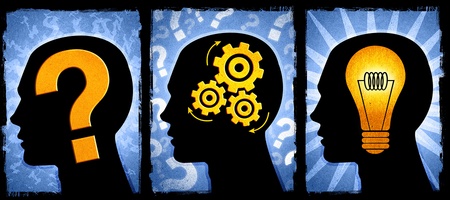 News Literacy, a curriculum developed at Stony Brook University in New York over the past ten years, is designed to help students develop the critical thinking skills needed to judge the reliability and credibility of information, whether it come via print, television or the Internet. This is a particularly important life skill in the Digital Age, as everyone struggles to deal with information overload and the difficulty in determining the authenticity of reports.
News Literacy, a curriculum developed at Stony Brook University in New York over the past ten years, is designed to help students develop the critical thinking skills needed to judge the reliability and credibility of information, whether it come via print, television or the Internet. This is a particularly important life skill in the Digital Age, as everyone struggles to deal with information overload and the difficulty in determining the authenticity of reports.
In the Stony Brook model, students are taught to evaluate information primarily by analyzing news as well as new forms of information that are often mistaken for journalism.
These challenges have created the demand for a new kind of literacy. A healthy civil society can exist only if the public is well-informed. If people can be easily led to believe rumors or gossip, the consequences can be quite dangerous.
News Literacy's Stony Brook model uses heavily illustrated lectures followed by hands-on exercises to help students understand how journalism works and why information is such a powerful force for good and ill in modern societies. The goal is to help them build critical thinking skills that will allow them to:
- Recognize the difference between journalism and other kinds of information and between journalists and other purveyors of information;
- Separate news from opinion in the context of journalism;
- Analyze the differences between assertion and verification and between evidence and inference in a news report;
- Evaluate and deconstruct news reports based on the quality of evidence presented and the reliability of sources, and to understand and apply these principles across all news platforms;
- Distinguish between news media bias and audience bias.
Underlying these skills, the course presents and reinforces four key concepts:
- Appreciation of the power of reliable information and the importance of the free flow of information in a democratic society;
- Understanding why news matters and why becoming a more discerning news consumer can change individual lives and the life of the country;
- Understanding of how journalists work and make decisions and why they make mistakes;
- Understanding how the digital revolution and the structural changes in the news media can affect news consumers, and our new responsibilities as publishers as well as consumers.
The goal is for our students to sense when something is "too good to be true” – like those outlandish photos of sharks in New York City that appeared after Hurricane Sandy. Once that alarm has gone off, then the news literate consumer can either disregard the information or pursue other sources in the information-rich world in which we live.
